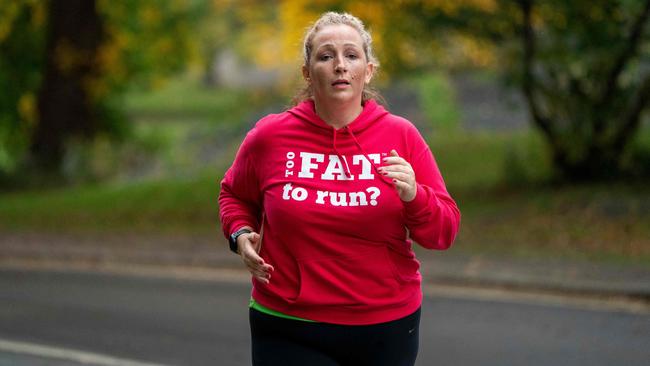‘Fat’ marathon runner defies doctor to chase bigger challenges
Six years ago, a doctor told Londoner Julie Creffield she was too fat to run a marathon. She had none of it, and proved him wrong.

Six years ago a doctor told Londoner Julie Creffield she was too fat to run a marathon. She had none of it, and proved him wrong.
The 40-year-old mother of one will be taking part in her fourth marathon in New York today — “a dream come true”.
The professional life coach started running in 2010 when she took part in a short race and came last. “When I got to the finish line, there was no finish line left, everybody had left and gone home,” she says after a jog in Central Park.
She remembers feeling “very embarrassed and thinking maybe I shouldn’t be a runner, maybe I am not welcome in the running world”. So she decided to inspire other women of a similar shape by writing the blog Too Fat to Run.
The London Olympics inspired her to run her first marathon. “I’ve done maybe 30 half marathons and ultra marathons and triathlons … anything that kind of challenges me,” she says.
“For me it’s about inspiring women of all shapes and sizes to give it a go. I feel quite passionate about larger women running because we weren’t very visible in the running world. When you think runner, you think tall, slim, fast, and lots of people want to run for lots of other reasons.”
Creffield, who says she does not know how much she weighs, wears an Australian dress size 20. It is in Central Park, where the fall leaves are already turning yellow, that Creffield hopes to cross the finish line along with the more than 50,000 other runners taking part from around the world.
The average time to complete the New York marathon, which takes in the city’s five boroughs, is four hours, 35 minutes.
Last year’s winner, Geoffrey Kamworor of Kenya, romped home in two hours, 10 minutes, 53 seconds.
Creffield calculates that it’ll take her up to 7½ hours. She’ll run as much as she can, and walk when she needs a breather.
People take up running for all kinds of reasons, she says, not only to lose weight or get in shape but also to counter depression, to socialise or even carve out a little me time.
Although she has been heckled and insulted for running, Creffield stops at nothing and is confident that attitudes are changing.
“I’ve had things thrown from car windows at me when I train. I got heckled a lot of the time. It tends to be either children or grown men. Sometimes people shout things they think are motivating, but they are not,” she says.
“Because you’re big, they think you’re new to running and they shout things like ‘It gets easier!’ and I’m like, ‘No, it doesn’t. I’ve been running for 15 years and this is my pace’,” Creffield says, smiling. “There are so many more things that define us as women than what we look like.”
Although some people want marathons reserved only for elite runners, a growing majority believe they should be open to as wide a pool of people as possible.
“Our mission at New York Road Runners is to help and inspire people through running, regardless of their age or ability. Everyone is welcome,” says Chris Weiller, spokesman for the group that organises the marathon.
AFP



To join the conversation, please log in. Don't have an account? Register
Join the conversation, you are commenting as Logout